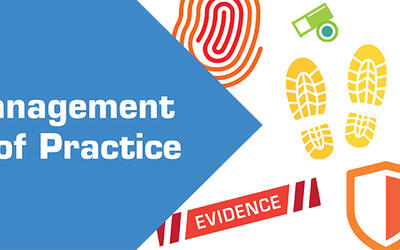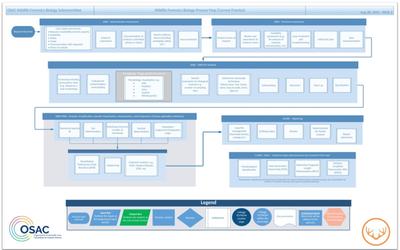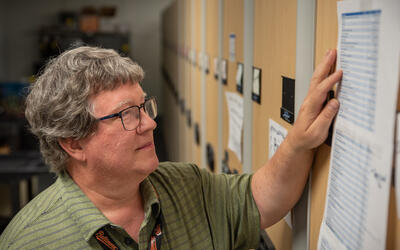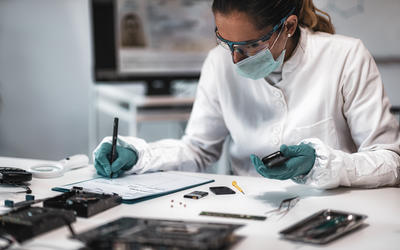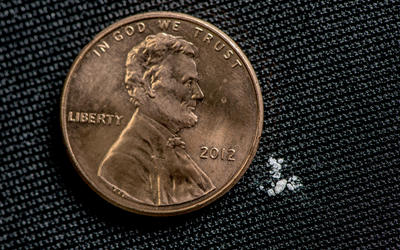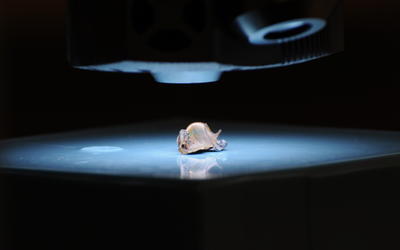What is forensic science?
Forensic science is a set of scientific methods and expertise used to investigate crimes or examine evidence that might be presented in a court of law. Forensic science comprises a diverse array of disciplines, from fingerprint and DNA analysis to the analysis of synthetic opioids and digital evidence.
Forensic science plays a crucial role in our criminal justice system. Forensic science can help investigators collect, rapidly analyze, and interpret complex evidence to solve crimes, including cases that have long been unsolved. It can help exclude innocent people from an investigation or exonerate them in cases of wrongful conviction. And it can help juries as they make decisions that have enormous consequences on the lives of alleged perpetrators.
At the same time, forensic science faces challenges. A landmark 2009 report by the National Academies of Sciences, Engineering and Medicine found that many commonly used forensics methods at the time were not supported by scientific evidence. This report, along with other major studies, charted a path forward. Guided by the recommendations of these studies and extensive engagement with the forensic science community, NIST researchers work to provide a more rigorous scientific basis for many forensic science disciplines.
News and Updates
What is NIST's role?
NIST’s forensic science program strengthens the scientific basis of forensic methods, standards and practices in the criminal justice system in many ways, such as:
- Rapidly detecting synthetic drugs to combat the opioid epidemic
- Analyzing complex DNA evidence
- Developing advanced tools to root out cybercrime
- Improving facial recognition tools
NIST’s work to strengthen forensic practice involves three key components:
Research
NIST conducts scientific research in many forensic areas, including DNA, seized drugs, firearms, fingerprints, trace evidence, digital forensics, evidential statistics and quality assurance. NIST forensic science research has given law enforcement agencies advanced tools for identifying street drugs, improved the reliability of DNA profiles, and published important findings on the challenges of identifying THC, the active ingredient in cannabis, in breath. NIST’s research also develops and provides physical reference materials and data that help forensic laboratories validate their analytical methods and ensure accurate test results.
Foundation Reviews
NIST experts review the scientific literature to identify the foundations that support and underpin forensic methods; document and evaluate the methods’ empirical evidence; explore the methods’ capabilities and limitations; and identify knowledge gaps and areas for future research. NIST has begun or completed scientific foundation reviews in five areas: DNA Mixture Interpretation, Digital Investigation Techniques, Bitemark Analysis, Firearms Examination and Footwear Impressions.
Standards
NIST administers the Organization of Scientific Area Committees for Forensic Science (OSAC), which facilitates the development of high-quality, technically sound forensic science standards to help ensure that the results of forensic analysis are reliable and reproducible. OSAC has listed over 200 standards on its OSAC Registry and received implementation data from over 200 forensic science service providers putting these standards into practice. These types of standards cover a wide variety of topics in 22 forensic science disciplines, such as standards for analyzing bullets and cartridge cases found at crime scenes.
Check out our key accomplishments across all three components.
Blog Posts
Featured Videos
Detective X: (Re) Discovering Wilmer Souder
Preserving the JFK Assassination Bullets
Feature Stories and Explainers
Key Accomplishments
- Combating the opioid epidemic: NIST scientists have developed new tools that help police and forensic chemists detect and identify deadly opioid drugs such as fentanyl safely, efficiently and reliably. Using these tools, NIST researchers have found an alarming rise in a deadly tranquilizer called xylazine and other adulterants.
- Modernizing forensic DNA: Forensic DNA analysis techniques developed in part by NIST have matured the field and helped convict the guilty and exonerate the innocent. Among other things, NIST scientists have enabled enhanced DNA “fingerprints” to make DNA-based profiles more reliable. NIST also published a review of DNA mixture interpretation methods, finding that there is not enough publicly available data to independently assess the reliability of these methods.
- Advancing digital forensics: NIST provides the National Software Reference Library, one of the largest publicly known collections of computer software in the world, delivering a critical tool for computer forensics experts and expediting investigation of crimes involving digital evidence.
- Boosting biometrics: NIST researchers have created and curated some of the largest and most comprehensive biometric research databases, now widely used for training forensic practitioners, software validations and novel research. NIST researchers have evaluated technical bias in facial recognition algorithms that have helped technology developers and vendors improve their design, function and reliability.
- Impacting practice in the U.S.: Forensic science service providers are voluntarily upgrading their operating procedures to incorporate the latest forensic science standards developed through OSAC. OSAC’s 800 volunteer members and affiliates convened by NIST have dedicated their time to supporting the development of these documentary standards.
- Developing forensic standard reference materials: NIST has developed standard reference materials, including a hemp reference material, a standard bullet and a human DNA quantitation standard, that ensure that forensic labs produce rigorous and accurate measurements and contribute to public safety and fairness in the criminal justice system.
- Publishing process maps: NIST has published process maps that for the first time identify and document key decision points in the forensic evidence examination process for fingerprints, speaker recognition, handwriting, firearms, footwear and tire tread, DNA, seized drugs, and fire investigation. These process maps are being used by forensic science practitioners to improve field and laboratory processes, and are being cited in court filings.
- Teasing out the human factor: NIST, in collaboration with the National Institute of Justice, has examined how human factors influence the analysis and interpretation of friction ridge, handwriting and DNA evidence. These recommendations are helping to minimize the influence of human factors, increasing transparency during the examination process, and encouraging a culture of openness about errors, all of which result in improved analysis practices.





